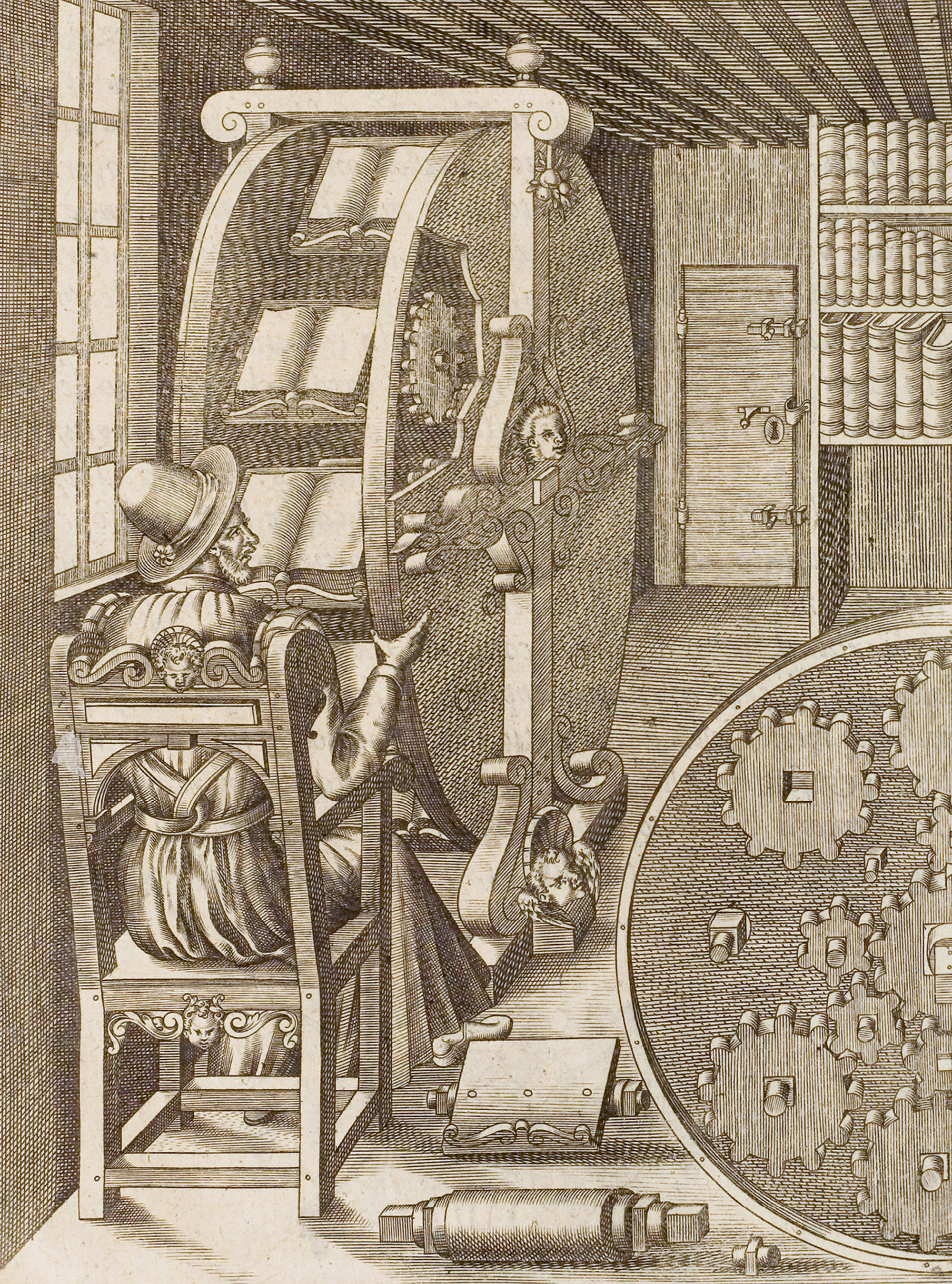The Ramelli Wheel
Reading in the round
Cabinet

Named after its inventor, the celebrated sixteenth-century Italian-born mathematician and military engineer Agostino Ramelli, the Ramelli wheel was one of the more than two hundred prospective machines included in his 1588 treatise Le diverse et artificiose machine. Alongside a number of martial innovations—new styles of catapults, folding pontoon bridges, and breaking devices—and more than one hundred water-raising machines, Ramelli’s volume also included a wide array of more domestic mechanisms such as fountains, milling apparatuses, and his revolving bookstand. Similar, if more modest, reading instruments were already in use by Italian scholars by that time (a simpler version was used as the frontispiece for a 1514 work on astrology), but Ramelli’s wheel was designed to be larger—six feet in diameter, it could hold many more books than conventional stands. And it proposed a complex epicyclic gearing system to keep the volumes it held at a constant angle, though at least one contemporary scholar has suggested that the gearing depicted in this image from Le diverse et artificiose machine would actually not have functioned in the way that Ramelli claimed, causing the books to fall to the floor rather than holding them in place
Spotted an error? Email us at corrections at cabinetmagazine dot org.
If you’ve enjoyed the free articles that we offer on our site, please consider subscribing to our nonprofit magazine. You get twelve online issues and unlimited access to all our archives.